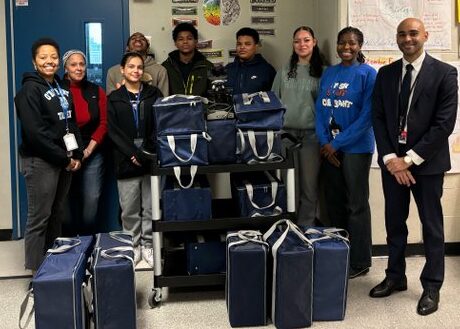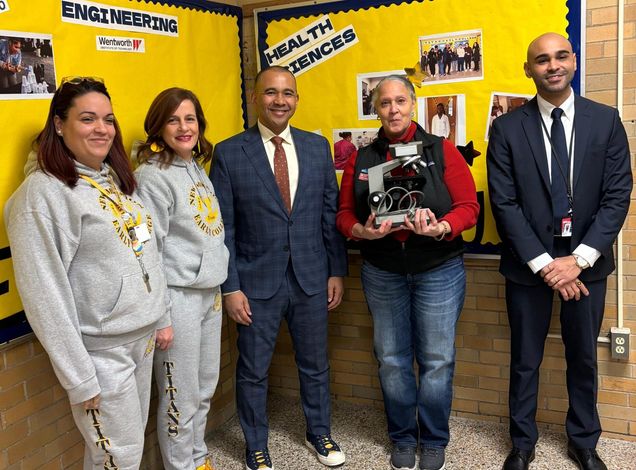BUMC Donates 50 Microscopes to Three Boston Secondary Schools

Three schools in the Boston Public Schools system recently received a donation of 50 lab-quality microscopes from the Medical Campus.
The John D. O’Bryant School of Mathematics and Science (Grades 7-12) in Roxbury, Dearborn STEM Academy (Grades 6-12) also located in Roxbury, and New Mission High School (Grades 7-12) in Hyde Park were the recipients of Olympus CH series microscopes that were no longer being used by BUMC students.
“This was a magnificent gift. We had the microscopes and the carrying cases, and the microscopes were in wonderful condition,” said Valeda Britton, BUMC executive director of community relations.
These 1970s-era Olympus CH series microscopes have a long lifespan, but technology upgrades eclipse even the best performers at some point. Approximately a decade ago, the medical school and campus transitioned to virtual online microscope programs for teaching purposes.
“They were used less and less,” said Lucy Milne, director of education outreach. Eventually, the microscopes were all placed in storage, and space limitations prompted plans to donate the instruments.
“Erita Ikonomi, an educational technologist, maintained the scopes and kept them safe so they can now have a second life,” said Milne.
The Medical Campus has a history of supporting Boston Public Schools. Sometimes that is through grants or other financial programs, but it also can tap the expertise of BUMC students and faculty or excess equipment donations, said Britton. BU has specific programs like the Summer Biomedical Research Internship and the Med-Science Program that introduce underrepresented youth from Boston and other communities to post-secondary STEM-M (Science, Technology, Engineering, Mathematics and Medicine) programs.

As the Medical Campus liaison to the surrounding communities, Britton knew who to call. She and her colleagues visited the schools in advance of the donation.
“We casually brought up that we had these microscopes, and asked if they could use them in their science classes. And all three schools said yes,” said Britton. Within a few days, the 50 microscopes were loaded into a BU truck and driven to the schools with two receiving 17 instruments and the third 16.
“The folks at the schools met us and they were really grateful to have these microscopes,” said Britton. “I like the idea of those microscopes leading students to be more curious and more willing to explore.”
“We said ‘Yes,’” said Samuel Baker, an instructional coach at Dearborn STEM Academy focused on STEM and interdisciplinary pathways in health sciences, engineering and advanced manufacturing and computer science.
In 2018, Dearborn moved into a brand new, $70 million state-of-the-art STEM facility. Baker said the new four-story school has microscopes in a lab on the second floor, but those had to be transported up a floor to the biology lab when needed. The 16 Olympus microscopes allowed them to have instruments in both labs.
“They are of such good quality and very durable. They can take the wear and tear,” said Baker.
Baker pointed to a secondary, but important, impact of institutions of higher learning interacting with BPS students. Dearborn’s student population is 90% African American, with many Cape Verdean families where English is their second or even third language, Baker said. Whether it’s University staff, faculty or students who come to the high schools, they are a bridge to a life beyond everyday existence.
“Students need to hear the college language, whether it’s a four-year or two-year college. We need to expose them to opportunities after high school,” he said.